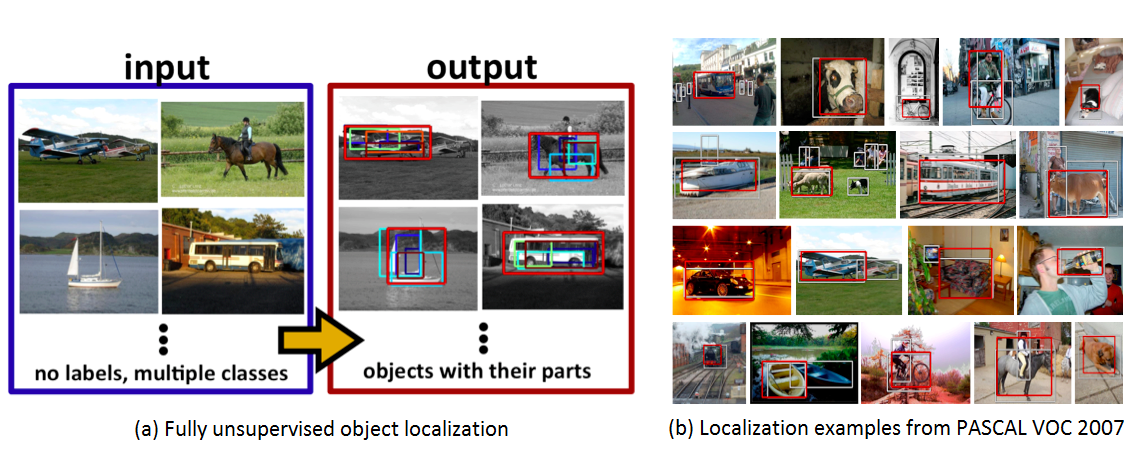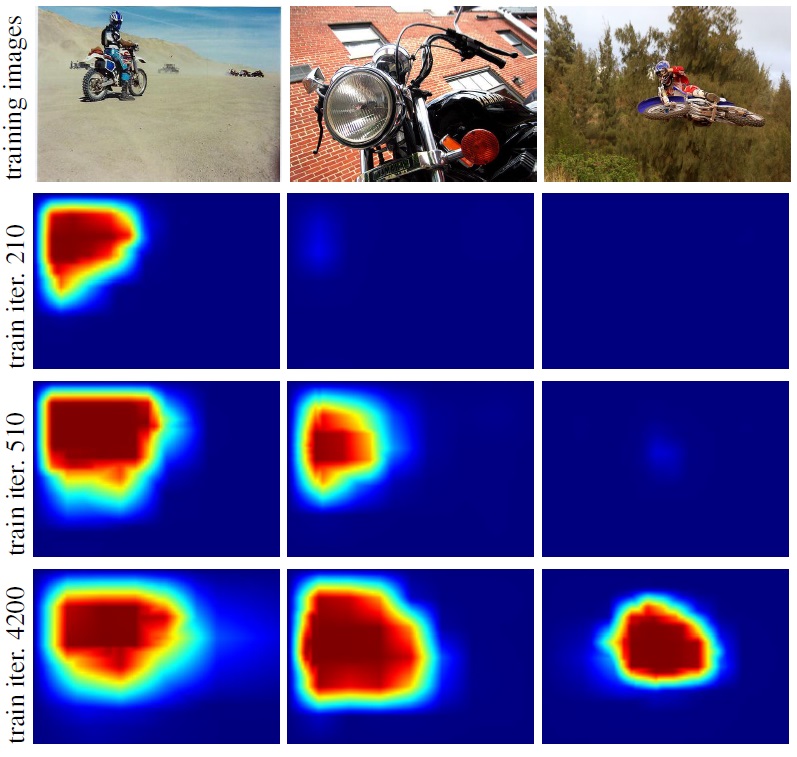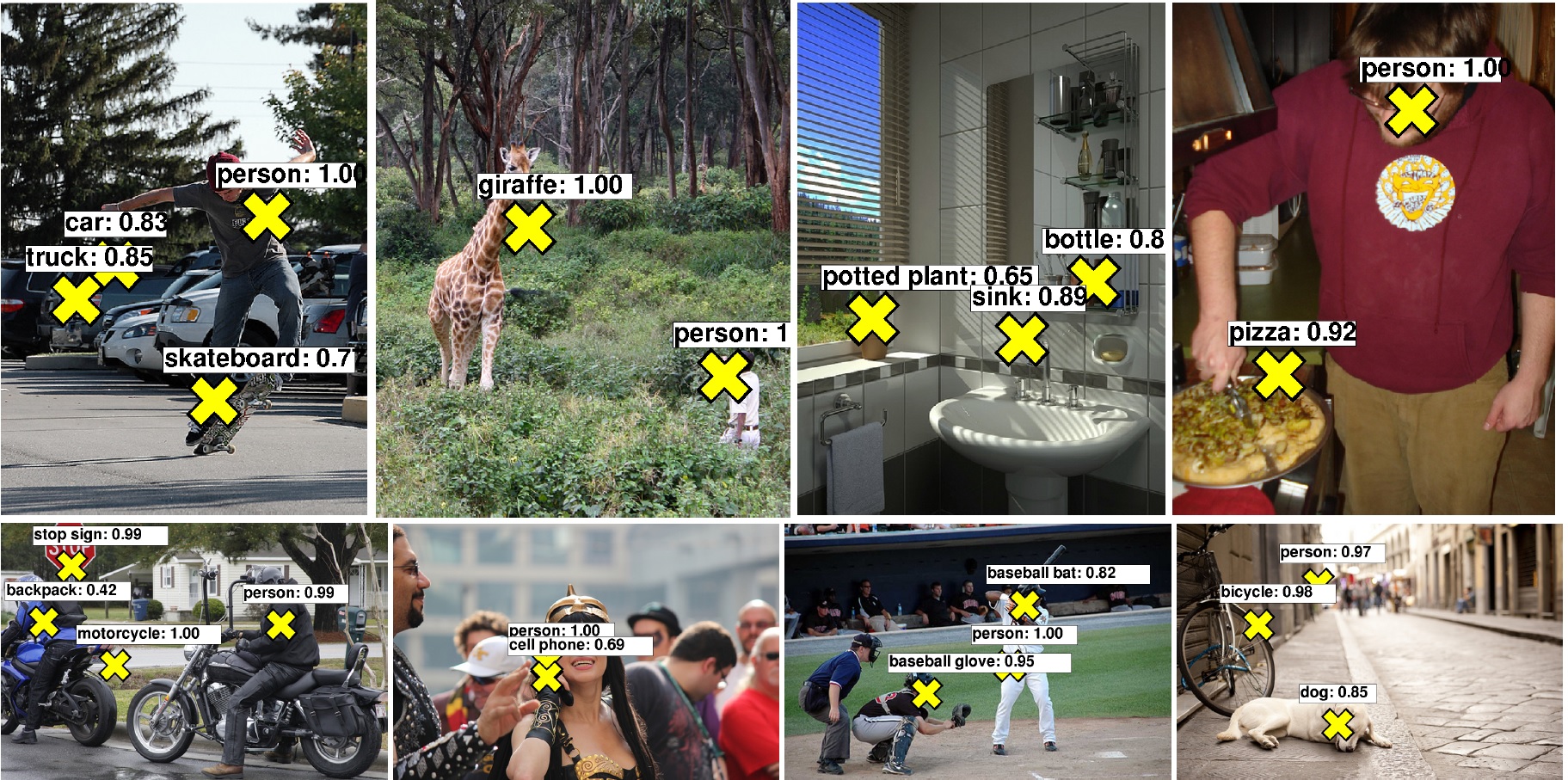Section: New Results
Category-level object and scene recognition
Finding Matches in a Haystack: A Max-Pooling Strategy for Graph Matching in the Presence of Outliers
Participants : Minsu Cho, Jian Sun, Olivier Duchenne, Jean Ponce.
|
A major challenge in real-world feature matching problems is to tolerate the numerous outliers arising in typical visual tasks. Variations in object appearance, shape, and structure within the same object class make it harder to distinguish inliers from outliers due to clutters. In this work, we propose a max-pooling approach to graph matching, which is not only resilient to deformations but also remarkably tolerant to outliers. The proposed algorithm evaluates each candidate match using its most promising neighbors, and gradually propagates the corresponding scores to update the neighbors. As final output, it assigns a reliable score to each match together with its supporting neighbors, thus providing contextual information for further verification. We demonstrate the robustness and utility of our method with synthetic and real image experiments. This work has been published at CVPR 2014 [11] . The proposed method and its qualitative results are illustrated in Figure 3 .
Unsupervised Object Discovery and Localization in the Wild: Part-based Matching with Bottom-up Region Proposals
Participants : Minsu Cho, Suha Kwak, Cordelia Schmid [Inria Lear] , Jean Ponce.
|
This work addresses unsupervised discovery and localization of dominant objects from a noisy image collection of multiple object classes. The setting of this problem is fully unsupervised, without even image-level annotations or any assumption of a single dominant class. This is significantly more general than typical colocalization, cosegmentation, or weakly-supervised localization tasks. We tackle the discovery and localization problem using a part-based matching approach: We use off-the-shelf region proposals to form a set of candidate bounding boxes for objects and object parts. These regions are efficiently matched across images using a probabilistic Hough transform that evaluates the confidence in each candidate region considering both appearance similarity and spatial consistency. Dominant objects are discovered and localized by comparing the scores of candidate regions and selecting those that stand out over other regions containing them. Extensive experimental evaluations on standard benchmarks demonstrate that the proposed approach significantly outperforms the current state of the art in colocalization, and achieves robust object discovery in challenging mixed-class datasets. This work has been submitted to CVPR 2015 [22] . The proposed method and its qualitative results are illustrated in Figure 4 .
Learning and Transferring Mid-Level Image Representations using Convolutional Neural Networks
Participants : Maxime Oquab, Leon Bottou [MSR New York] , Ivan Laptev, Josef Sivic.
Convolutional neural networks (CNN) have recently shown outstanding image classification performance in the large-scale visual recognition challenge (ILSVRC2012). The success of CNNs is attributed to their ability to learn rich mid-level image representations as opposed to hand-designed low-level features used in other image classification methods. Learning CNNs, however, amounts to estimating millions of parameters and requires a very large number of annotated image samples. This property currently prevents application of CNNs to problems with limited training data. In this work we show how image representations learned with CNNs on large-scale annotated datasets can be efficiently transferred to other visual recognition tasks with limited amount of training data. We design a method to reuse layers trained on the ImageNet dataset to compute mid-level image representation for images in the PASCAL VOC dataset. We show that despite differences in image statistics and tasks in the two datasets, the transferred representation leads to significantly improved results for object and action classification, outperforming the current state of the art on Pascal VOC 2007 and 2012 datasets. We also show promising results for object and action localization. This work has been published at CVPR 2014 [13] .
Weakly supervised object recognition with convolutional neural networks
Participants : Maxime Oquab, Leon Bottou [MSR New York] , Ivan Laptev, Josef Sivic.
|
|
Successful methods for visual object recognition typically rely on training datasets containing lots of richly annotated images. Detailed image annotation, e.g. by object bounding boxes, however, is both expensive and often subjective. We describe a weakly supervised convolutional neural network (CNN) for object classification that relies only on image-level labels, yet can learn from cluttered scenes containing multiple objects (see Figure 5 ). We quantify its object classification and object location prediction performance on the Pascal VOC 2012 (20 object classes) and the much larger Microsoft COCO (80 object classes) datasets. We find that the network (i) outputs accurate image-level labels, (ii) predicts approximate locations (but not extents) of objects, and (iii) performs comparably to its fully-supervised counterparts using object bounding box annotation for training. This work has been submitted to CVPR 2015 [23] . Illustration of localization results by our method in Microsoft COCO dataset is illustrated in Figure 6 .
Learning Dictionary of Discriminative Part Detectors for Image Categorization and Cosegmentation
Participants : Jian Sun, Jean Ponce.
This work proposes a novel approach to learning mid-level image models for image categorization and cosegmentation. We represent each image class by a dictionary of discriminative part detectors that best discriminate that class from the background. We learn category-specific part detectors in a weakly supervised setting in which the training images are only labeled with category labels without part / object location labels. We use a latent SVM model regularized by l1,2 group sparsity to learn the discriminative part detectors. Starting from a large set of initial parts, the group sparsity regularizer forces the model to jointly select and optimize a set of discriminative part detectors in a max-margin framework. We propose a stochastic version of a proximal algorithm to solve the corresponding optimization problem. We apply the learned part detectors to image classification and cosegmentation, and quantitative experiments with standard benchmarks show that our approach matches or improves upon the state of the art. This work has been submitted to PAMI [24] .





